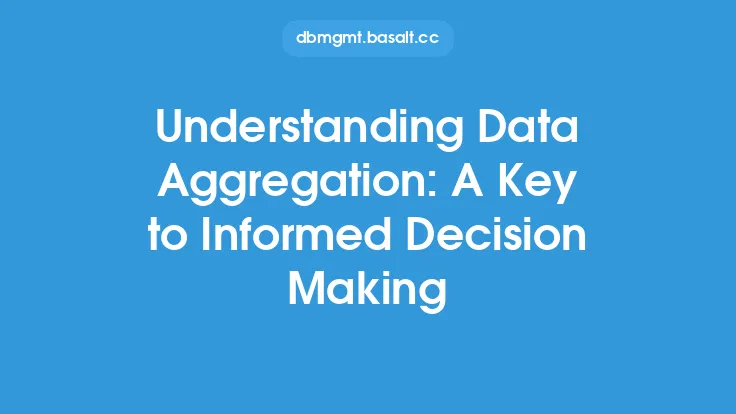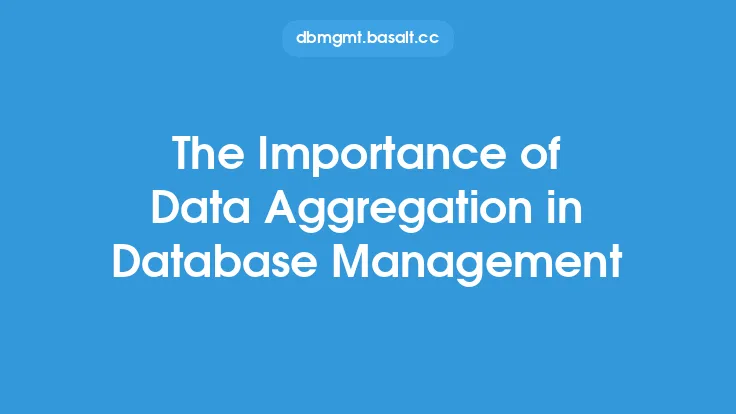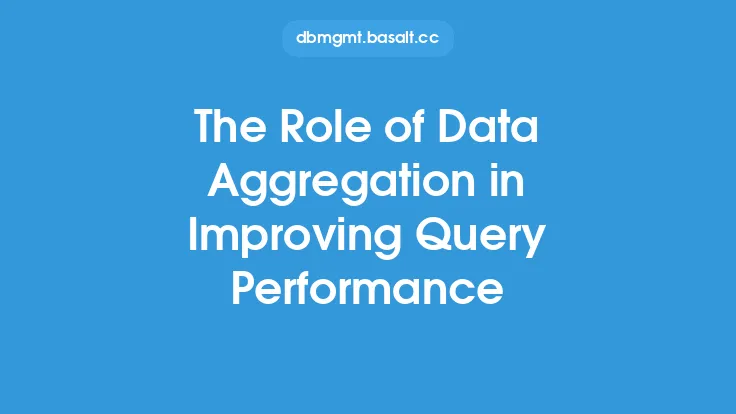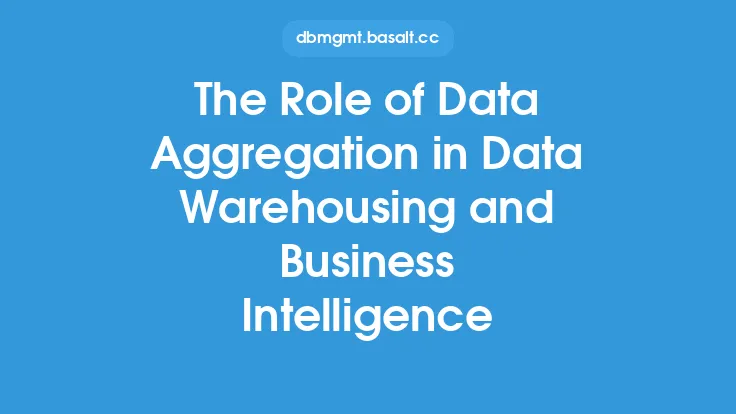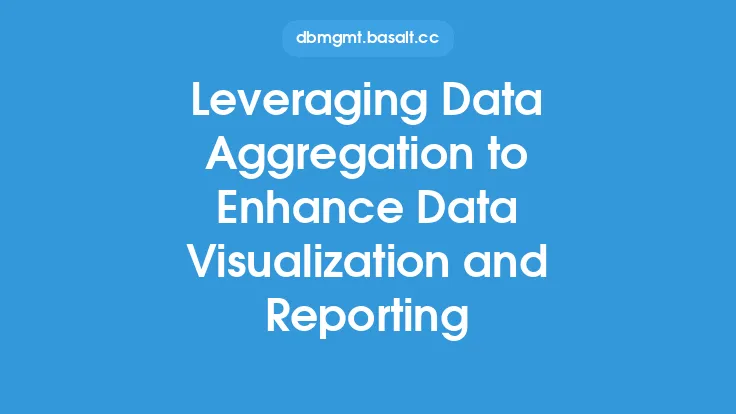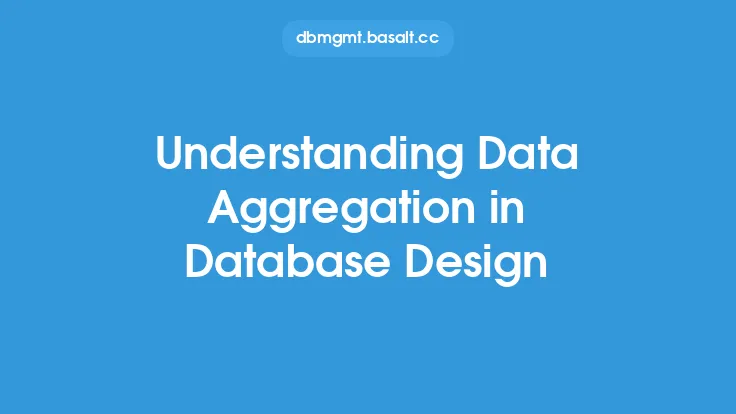Data aggregation is a crucial process in data analysis that involves collecting and summarizing data from multiple sources to provide a comprehensive view of the information. There are several data aggregation methods, including rollup, cube, and grouping sets, each with its own strengths and weaknesses. In this article, we will delve into the details of these methods, exploring their syntax, functionality, and use cases.
Introduction to Rollup
The rollup method is a data aggregation technique that allows users to generate multiple groupings of data with a single query. It is particularly useful when working with hierarchical data, such as sales data by region, country, and city. The rollup method enables users to calculate subtotals and totals for each level of the hierarchy, providing a detailed view of the data. The syntax for the rollup method typically involves the use of the ROLLUP keyword, followed by the columns that define the grouping hierarchy.
Introduction to Cube
The cube method is another data aggregation technique that allows users to generate multiple groupings of data, but with a more complex hierarchy. Unlike the rollup method, which only generates subtotals and totals for each level of the hierarchy, the cube method generates all possible combinations of the grouping columns. This provides a more comprehensive view of the data, but can also result in a larger result set. The syntax for the cube method typically involves the use of the CUBE keyword, followed by the columns that define the grouping hierarchy.
Introduction to Grouping Sets
The grouping sets method is a data aggregation technique that allows users to define multiple groupings of data within a single query. Unlike the rollup and cube methods, which generate multiple groupings automatically, the grouping sets method requires users to explicitly define each grouping. This provides more control over the result set, but can also be more complex to use. The syntax for the grouping sets method typically involves the use of the GROUPING SETS keyword, followed by a list of columns that define each grouping.
Comparison of Rollup, Cube, and Grouping Sets
When choosing a data aggregation method, it is essential to consider the specific requirements of the analysis. The rollup method is ideal for hierarchical data, while the cube method is better suited for complex hierarchies. The grouping sets method provides more control over the result set, but can be more complex to use. In terms of performance, the rollup method is generally the most efficient, as it only generates subtotals and totals for each level of the hierarchy. The cube method can be slower, as it generates all possible combinations of the grouping columns. The grouping sets method can be slower or faster, depending on the complexity of the groupings.
Use Cases for Rollup, Cube, and Grouping Sets
Each data aggregation method has its own use cases. The rollup method is commonly used in financial analysis, where hierarchical data is common. For example, a company may want to calculate sales by region, country, and city. The cube method is commonly used in data warehousing, where complex hierarchies are common. For example, a company may want to calculate sales by region, country, city, and product. The grouping sets method is commonly used in ad-hoc analysis, where users need to define multiple groupings of data quickly. For example, a user may want to calculate sales by region and product, as well as by country and city.
Technical Implementation
The technical implementation of rollup, cube, and grouping sets varies depending on the database management system (DBMS) being used. In general, the syntax for these methods is similar across DBMS, but the specific implementation may differ. For example, in Oracle, the rollup method is implemented using the ROLLUP keyword, while in SQL Server, it is implemented using the ROLLUP keyword with the GROUP BY clause. In MySQL, the rollup method is implemented using the ROLLUP keyword with the GROUP BY clause, but only in version 8.0 and later.
Best Practices for Using Rollup, Cube, and Grouping Sets
When using rollup, cube, and grouping sets, there are several best practices to keep in mind. First, it is essential to understand the data hierarchy and the requirements of the analysis. This will help determine which data aggregation method to use. Second, it is essential to optimize the query for performance, as these methods can be resource-intensive. This can involve indexing the columns used in the grouping hierarchy, as well as using efficient join and aggregation techniques. Finally, it is essential to test the query thoroughly, to ensure that it is producing the correct results.
Conclusion
In conclusion, rollup, cube, and grouping sets are powerful data aggregation methods that can help users gain insights into their data. Each method has its own strengths and weaknesses, and the choice of method depends on the specific requirements of the analysis. By understanding the syntax, functionality, and use cases for each method, users can make informed decisions about which method to use. Additionally, by following best practices for implementation and optimization, users can ensure that their queries are efficient and effective. Whether working with hierarchical data, complex hierarchies, or ad-hoc analysis, rollup, cube, and grouping sets provide a flexible and powerful way to aggregate and analyze data.
